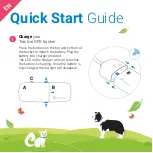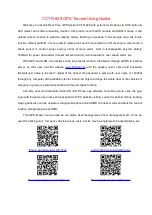
4
Note that components R10 and L3 are not supplied in the kit. The PCB has space for these components,
which may optionally be fitted for those wishing to supply power to an external active antenna.
Please refer to the parts placement diagram below.
Pay special attention to the orientation of the semiconductor IC1. The dimple in the PCB silkscreen must
be aligned with the dimple at the top of IC1.
It’s a good idea to use a jeweller’s loupe like the
one pictured, or a magnifying glass, to inspect each
soldered joint. A strong light is also very useful.
Look for excess solder that could cause short
circuits (solder bridges) to adjacent tracks. Also
look for joints where the solder has not correctly
flowed into the joint, i.e adhered to the component
lead and the PCB.
The QLG1 PCB has a ground plane on both sides
of the board. Component connections to the ground plane need a little extra heat, because of the heat
dissipation of the ground plane. Even though the solder pads are thermally “isolated” in the PCB layout,
there is still significant heat loss into the ground plane. My suggestion for components with a ground
connection, is to solder the non-ground lead(s) first
– this anchors the component in place and makes it
easier to get a good connection when you come to soldering the grounded lead. Again, use the jeweller’s
loupe to make a careful inspection.




























